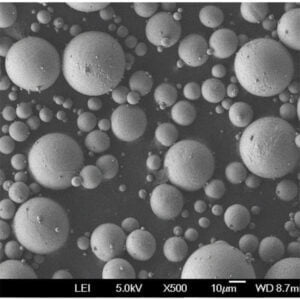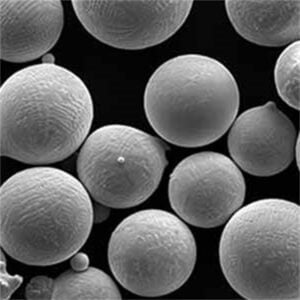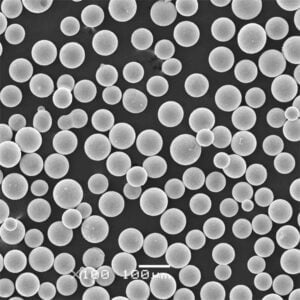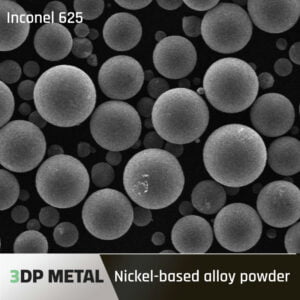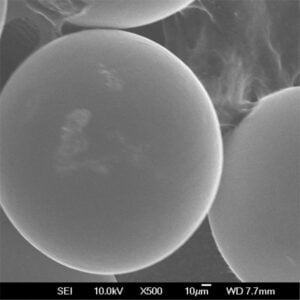遠心霧化プロセス
目次
遠心霧化は魅力的で複雑なプロセスであり、高品質の金属粉末を作る上で極めて重要な役割を果たします。これらの粉末は、そのユニークな特性と用途から、航空宇宙から医療機器に至るまで、様々な産業で不可欠なものです。遠心微粒化の複雑な仕組みについて掘り下げてみよう。 遠心霧化プロセスそして、その用途を探り、具体的な金属粉のモデルを検討する。
遠心霧化法の概要
遠心霧化法は、金属を溶解し、遠心力によって微細な液滴に分散させることによって金属粉末を製造するために使用される方法である。この技術は、工業用途に望ましい特性を持つ均一な大きさの粒子を効率的に作ることで知られています。
遠心霧化の仕組み
プロセスは、金属が溶融状態になるまで加熱されることから始まる。溶融金属は次に、急速に回転するディスクまたはカップに導入され、遠心力によって金属が外側に飛び出す。金属が排出されると、小さな液滴に分解され、微粉末に凝固する。これらの粒子のサイズと形状は、回転速度や金属の温度など、さまざまなパラメーターを調整することで制御できる。
遠心霧化の主な利点
- 均一な粒子径: 正確な測定を必要とするアプリケーションに不可欠な、安定した粒子径の粉体を生成します。
- 高純度: コンタミネーションを低減し、高純度の金属粉末を製造。
- 汎用性がある: さまざまな金属や合金に使用できる。
- 効率が良い: 比較的短時間で大量の粉体を生産できる。

詳細内訳 遠心噴霧プロセス パラメータ
| パラメータ | 説明 |
|---|---|
| 回転速度 | 速度を上げると、粒子が細かくなる。 |
| 温度 | 最適な温度は、適切な溶融と凝固を保証する。 |
| メタル・タイプ | 最適な噴霧化には、金属によって特有の条件が必要です。 |
| アトマイズ環境 | 酸化や汚染を防止するための管理された雰囲気(不活性ガスなど)。 |
| ディスク/カップ・デザイン | 特定の設計は粒子径と分布に影響を与える。 |
| フィード・レート | 溶融金属を回転ディスクに供給する速度は、粒子形成に影響する。 |
遠心霧化法の用途
遠心アトマイズは、その特性に合わせて高品質の金属粉末を製造する能力により、様々な産業で採用されています。主な用途をいくつかご紹介します:
| 産業 | 申し込み |
|---|---|
| 航空宇宙 | 航空機・宇宙船用の軽量・高強度部品の製造。 |
| 医療機器 | インプラントや補綴物のための生体適合性材料の創製。 |
| 自動車 | エンジンおよびトランスミッション用の耐久性が高く効率的な部品を製造。 |
| アディティブ・マニュファクチャリング | 3Dプリンティングやその他の高度な製造技術用の粉末の供給。 |
| エレクトロニクス | 電子部品用導電性材料の製造。 |
金属粉末の仕様、サイズ、等級、規格
遠心霧化法によって製造される金属粉末の仕様は、意図される用途や使用される金属によって異なります。一般的な仕様をまとめた詳細な表を以下に示します:
| 金属粉末 | 粒子径(µm) | 純度(%) | 密度 (g/cm³) | スタンダード |
|---|---|---|---|---|
| アルミニウム(Al) | 10-100 | 99.9 | 2.70 | ASTM B 928 |
| チタン(Ti) | 15-150 | 99.5 | 4.50 | ASTM F 1580 |
| ニッケル(Ni) | 20-200 | 99.7 | 8.90 | ISO 4506 |
| 銅(Cu) | 10-90 | 99.9 | 8.96 | ASTM B 964 |
| ステンレス鋼 | 25-250 | 99.8 | 7.80 | ASTM B 212 |
| コバルト | 20-150 | 99.6 | 8.90 | ISO 8492 |
| 鉄(Fe) | 5-100 | 99.5 | 7.86 | ASTM A 809 |
| マグネシウム (Mg) | 20-180 | 99.9 | 1.74 | ASTM B 403 |
| 亜鉛 | 10-120 | 99.7 | 7.14 | ASTM B 875 |
| 金(Au) | 1-50 | 99.99 | 19.32 | ASTM B 558 |
金属粉末のサプライヤーと価格詳細
金属粉末の市場は広大で、数多くのサプライヤーがさまざまな製品をさまざまな価格帯で提供している。以下は、主なサプライヤーとその価格設定の詳細を示した表である:
| サプライヤー | 金属粉末 | 価格(USD/kg) | 最小発注量 (kg) | 所在地 |
|---|---|---|---|---|
| アドバンスド・パウダー | アルミニウム | 50 | 10 | アメリカ |
| メタルコ・インダストリーズ | チタン | 200 | 5 | ドイツ |
| NiTechメタルズ | ニッケル | 100 | 20 | カナダ |
| 株式会社キューパワー | 銅 | 75 | 15 | 中国 |
| スチールフォーム | ステンレス鋼 | 80 | 25 | 英国 |
| コ・メタルズ | コバルト | 150 | 10 | 韓国 |
| アイアンテック | 鉄 | 40 | 50 | インド |
| マグパワー | マグネシウム | 60 | 30 | アメリカ |
| Zn生産者 | 亜鉛 | 45 | 20 | メキシコ |
| ゴールデン・メタルズ | ゴールド | 6000 | 1 | スイス |
遠心霧化の長所と短所を比較する
を考慮する場合 遠心霧化プロセス 金属粉末製造のためには、その利点と限界を比較検討することが不可欠である。
| メリット | デメリット |
|---|---|
| 高純度: 最小限の汚染リスク。 | コストだ: 初期設定と設備コストが高い。 |
| 均一な粒子径: 一貫した製品品質。 | 複雑さ: パラメーターを正確にコントロールする必要がある。 |
| 汎用性がある: 幅広い金属に適用可能。 | メンテナンス 機器の定期的なメンテナンスが必要である。 |
| 効率が良い: 迅速な生産速度。 | エネルギー消費: プロセス中のエネルギー使用量が多い。 |
具体的な金属粉末のモデルと説明
より明確なイメージを提供するために、遠心霧化によって製造される具体的な10種類の金属粉末モデルを探ってみよう:
- アルミニウム合金6061パウダー
- 説明 優れた機械的特性を持つ軽量構造部品に最適。
- アプリケーション 航空宇宙部品、自動車フレーム、自転車部品。
- チタングレード5パウダー
- 説明 高強度、低密度、優れた耐食性で知られる。
- アプリケーション 医療用インプラント、航空宇宙用ファスナー、スポーツ用品。
- ニッケル合金625パウダー
- 説明 高温での酸化や腐食に対して優れた耐性を発揮する。
- アプリケーション 海洋用途、化学処理、航空宇宙エンジン。
- 銅粉
- 説明 高い電気伝導性と熱伝導性により、電子用途に最適。
- アプリケーション 電気接点、熱交換器、3Dプリント。
- ステンレススチール316Lパウダー
- 説明 優れた耐食性と機械的特性を提供。
- アプリケーション 医療機器、食品加工機器、船舶部品。
- コバルトクロム合金粉末
- 説明 優れた耐摩耗性と生体適合性。
- アプリケーション 歯科用インプラント、整形外科用インプラント、高性能エンジン部品。
- 鉄粉
- 説明 磁気特性と反応性のため、さまざまな工業用途に使用される。
- アプリケーション 粉末冶金、磁性材料、化学触媒。
- マグネシウム合金AZ31パウダー
- 説明 軽量でありながら優れた強度と耐食性を併せ持つ。
- アプリケーション 航空宇宙部品、自動車部品、携帯電子機器。
- 亜鉛パウダー
- 説明 亜鉛メッキや亜鉛を多く含む塗料の製造に不可欠。
- アプリケーション 腐食防止コーティング、バッテリー、医薬品。
- ゴールドパウダー
- 説明 優れた導電性と耐性を必要とする特殊用途向けの高純度金粉。
- アプリケーション エレクトロニクス、宝飾品製造、歯科修復。
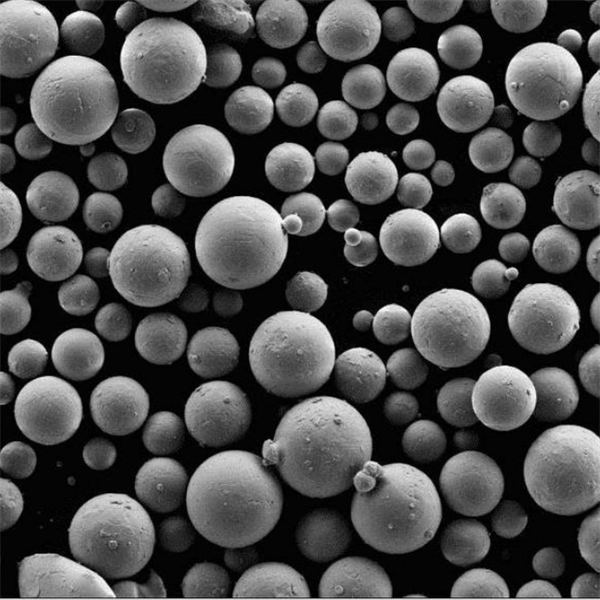
よくあるご質問
よくあるご質問やご不明な点を解決するために、総合的なFAQセクションをご用意しました:
遠心霧化とは?
遠心霧化は、溶融金属を微粉末にするプロセスである。溶融金属は、高速回転する円盤の上に注がれる。遠心力によって金属は小さな液滴となってディスクから放り出され、凝固して金属粉末の粒子になる。
遠心霧化の利点は何ですか?
- 生産量: 遠心霧化は、ガス霧化のような他の方法よりも速い速度で金属粉末を製造することができる。
遠心霧化の欠点は何ですか?
- 粒子径と形状の制御: 遠心霧化は、他の方法と比較して、粉末粒子の最終的なサイズと形状の制御が難しい。
遠心霧化粉体の用途にはどのようなものがありますか?
遠心霧化粉末は、以下のような多くの用途に使用されている:
- 3Dプリンティング
- 金属射出成形
- ろう付け
- 溶接
- 溶射
遠心霧化は他の霧化プロセスと比較してどうですか?
金属を霧化する方法は他にもいくつかある。ここでは、遠心霧化と一般的な代替方法を簡単に比較する:
- ガス噴霧: 不活性ガスを用いて溶融金属の流れを液滴に分解する。この方法は、粒径と形状の制御がより容易であるが、生産速度が遅い。
シェアする
MET3DP Technology Co., LTDは、中国青島に本社を置く積層造形ソリューションのリーディングプロバイダーです。弊社は3Dプリンティング装置と工業用途の高性能金属粉末を専門としています。
関連記事
Met3DPについて
最新情報
製品

3Dプリンティングと積層造形用金属粉末






